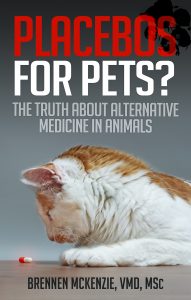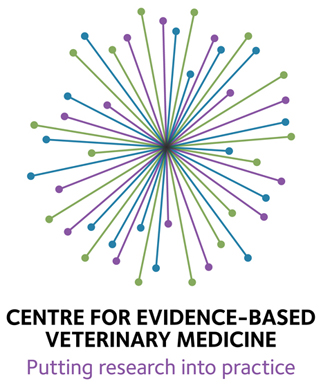It is widely known by veterinarians, pet owners, and dog breeders that large breed puppies are at greater risk than other breeds for developmental disorders of the bones and joints, including hip dysplasia, elbow dysplasia, osteochondrosis dissecans (OCD), and hypertrophic osteodystrophy (HOD).[1,2] The breed predisposition for such disorders indicates a strong genetic component, however environmental factors can also influence the frequency of these disorders.[2,3] Nutrition during the growing period (birth until 10-12 months) is one of the most important factors influencing the development of these skeletal disorders. [2] Unfortunately, there are many myths about large breed puppy nutrition, so this article is an attempt to separate these from the real facts about developmental nutrition in large breed puppies.
Calories
By far the most important influence on the skeletal development of large breed puppies is total calories. Excess calories leads to more rapid growth and excess body weight, and these are associated with increased incidence of hip dysplasia, OCD, and elbow dysplasia.[4-8] Lower calorie diets do not reduce the ultimate stature a dog will achieve, but they reduce the rate of growth so that this size is achieved smoothly over the growth period rather than in a rapid burst.[9] This slower, more steady growth leads to fewer developmental orthopedic problems. he appropriate number of calories needed for optimal growth is different for every individual and depends on many factors. The best guideline for how much to feed is body condition. Several scoring systems are available (e.g. from Purina below), and puppies should be fed to an ideal condition (4/9 or 3/5).
Calcium
As with most nutrients, there is an optimal range of calcium levels for growing dogs. Both too much and not enough calcium can lead to developmental bone problems. For large breed dogs, this optimal range is narrower than for other breeds, and excessive levels of calcium cause OCD and other bone disorders earlier and with more severe consequences. While not all studies agree, the majority show a strong link between high calcium levels in the diet and bone problems, even when the levels of calories and other nutrients are the same. Though the level of calcium which increases the risk of skeletal problems varies with age, a calcium level of 210-540mg calcium per kilogram of body weight per day appears safe for large breed puppies of all ages. It is also important not to add vitamin and mineral supplements containing calcium to properly balanced puppy diets as this is very likely to increase calcium intake beyond safe levels. [2,5,10-12]
Protein
Many breeders and pet owners, as well as some veterinarians believe too much protein can contribute to developmental skeletal disorders in large breed puppies, but this is incorrect. An early study [5] observed orthopedic problems in dogs fed diets high in calories, protein, and calcium, but subsequent studies clarified that protein is not a risk factor for any of these problems.[13]
Diet Recommendations
The best way to meet the optimal dietary requirements for large breed puppies is with a commercial diet specifically designed for this purpose. Though many people recommend feeding an adult food, with the idea that it is lower in calories than regular puppy food, adult diets vary widely in calorie content, so this is not automatically true. Additionally, adult diets are not usually appropriately restricted in calcium content. It is also important not to add vitamin and mineral supplements containing calcium to properly balanced puppy diets as this is very likely to increase calcium intake beyond safe levels.
If you choose to feed a homemade diet or to supplement a commercial diet with table food or other additional ingredients, it is important to consult a nutritionist to ensure that the resulting diet has appropriate levels of calories and calcium to reduce the risk f developmental orthopedic disease.
References
1. Lauten SD. Nutritional risks to large-breed dogs: from weaning to the geriatric years. Vet Clin North Am Small Anim Pract. 2006 Nov;36(6):1345-59.
2. Hazewinkel H, Mott J. Main nutritional imbalances in osteoarticular diseases. In: Pibot P, Biourge V, Elliott D, editors. Encyclopedia of canine clinical nutrition. Aniwa SAS; 2006. p. 348-83.
3. LaFond E, Breur GJ, Austin CC. Breed susceptibility for developmental orthopedic diseases in dogs. J Am Anim Hosp Assoc. 2002 Sep-Oct;38(5):467-77.
4. Kealy RD, Lawler DF, Ballam JM, et al. Five-year longitudinal study on limited food consumption and development of osteoarthritis in coxofemoral joints of dogs. JAVMA. 1997;210:222-25.
5. Hedhamer A, Wu F, Krook L, et al. Overnutrition and skeletal disease: an experimental study in growing Great Dane dogs. Cornell Vet. 1974;64(1; Suppl 5):59.
6. Kastrom H. Nutrition, weight gain, and development of hip dysplasia. Acta Radiol. 1975;344(suppl):135.
7. Lavelle RB. The effect of overfeeding of a balanced complete commercial diet to a young group of Great Danes. In: Burger IH, Rivers JPW, editors. Nutrition of the dog and cat. Cambridge (MA), USA. Cambridge University Press; 1989. p. 303-15.
8. Grondalen J, Hedhammer A. Nutrition of the rapidly growing dog with special reference to skeletal disease. In: Anderson RS, editor. Nutrition and behavior in dogs and cats. Oxford, UK. 1982. 81-8.
9. Dammrich K. Relationship between nutrition and bone growth in large and giant dogs. J Nutr. 1991 Nov;121(11 Suppl):S114-21.
10. Hazelwinkel HAW, Goedegeburre SA, Poulos PW, et a;. Influence of chronic calcium excess on the skeletal development of growing Great Danes. J Amer Anim Hosp Assoc. 1985;21:337-91.
11. Schoenmakers I, Hazelwinkel HAW, Voorhout G, et al. Effects of diets with different calcium and phosphorus contents on the skeletal development and blood chemistry of growing Great Danes. Vet Rec. 2000;147:652-60.
12. Weber M, Martin L, Dumon H, et al. Growth and skeletal development in two large breeds fed 2 calciu levels. J Vet Int Med. 2000;388.
13. Nap RC, Hazelwinkel HAW, Voorhout G, et al. Growth and skeletal development in Great Dane pups fed different levels of protein intake. J Nutr. 1991;121:S107-113.
Too Thin
1 Ribs, lumbar vertebrae, pelvic bones and all bony prominences evident from a distance. No discernible body fat. Obvious loss of muscle mass.
2 Ribs, lumbar vertebrae and pelvic bones easily visible. No palpable fat. Some evidence of other bony prominence. Minimal loss of muscle mass.
3 Ribs easily palpated and may be visible with no palpable fat. Tops of lumbar vertebrae visible. Pelvic bones becoming prominent. Obvious waist.
Ideal
4 Ribs easily palpable, with minimal fat covering. Waist easily noted, viewed from above. Abdominal tuck evident.
5 Ribs palpable without excess fat covering. Waist observed behind ribs when viewed from above. Abdomen tucked up when viewed.
Too Heavy
6 Ribs palpable with slight excess fat covering. Waist is discernible viewed from above but is not prominent. Abdominal tuck apparent.
7 Ribs palpable with difficulty; heavy fat cover. Noticeable fat deposits over lumbar area and base of tail. Waist absent or barely visible. Abdominal tuck may be present.
8 Ribs not palpable under very heavy fat cover, or palpable only with significant pressure. Heavy fat deposits over lumbar area and base of tail. Waist absent. No abdominal tuck. Obvious abdominal distension may be present.
9 Massive fat deposits over thorax, spine and base of tail. Waist and abdominal tuck absent. Fat deposits on neck and limbs. Obvious abdominal distention.









